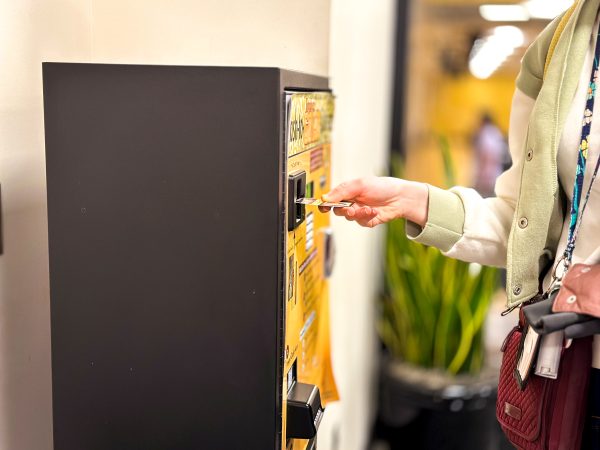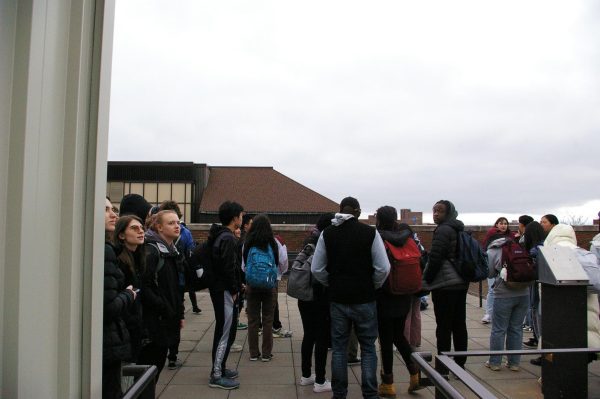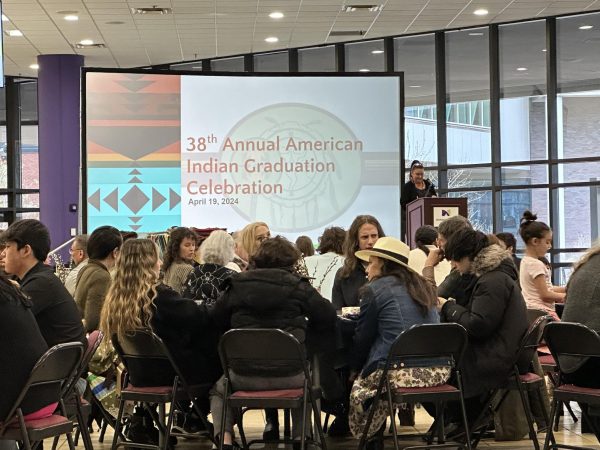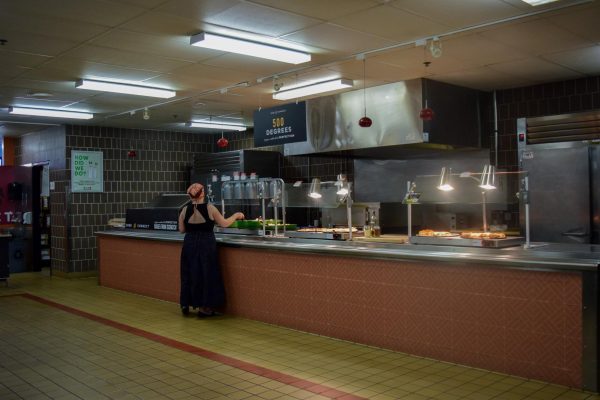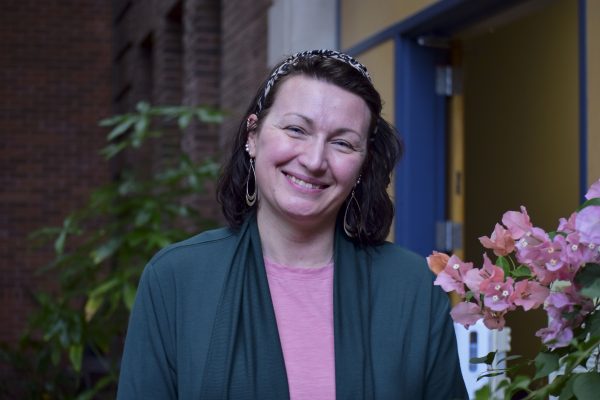UMN making progress towards furthering sustainability education on-campus, community
Students and faculty are looking to continue their momentum after a successful Earth Month.
Image by Graphic by Mary Ellen Ritter
The funding came from a variety of sources, including the University’s MPact 2025.
The University of Minnesota, along with Macalester College and other local groups, hosted a first-of-its-kind environmental collaboration expo between community members and students.
The Justice Expo, hosted by the Institute on the Environment (IonE) on April 21 at the Humphrey School of Public Affairs was the brainchild of local environmental Leader Michael Chaney, founder of Project Sweetie Pie. Brought to life by members of the IonE Undergraduate Leaders Cohort, the expo was designed to introduce students to community organizations and get them more involved in local sustainability efforts.
“I think what we’re seeing a deficit in is in interaction with the community,” said Tristina Ting, one of the IonE undergraduate leaders. “That’s why we created this expo, so we could bring in these small community organizations that the University and students don’t know about.”
One of the central messages of the event was that sustainability is a group effort. A total of 43 organizations tabled at the expo, which also featured a round table discussion with event partners and IonE leaders, student speakers, spoken word performances and ribbon dance performances.
“Again, it is us, the people, who have the power,” said spoken word performer Brandyn Tulloch.
The University established a new policy on sustainability and energy efficiency in 2009, signaling the beginning of a renewed commitment to sustainability around campus.
In the years since, the University has made strides towards achieving various sustainability impact goals and initiatives. According to the Office of Sustainability, in 2020, the Twin Cities campus reached a 51% reduction in greenhouse gas emissions since 2008, one year ahead of the date outlined in the 2011 Twin Cities campus climate action plan.
The University performed well in its most recent Sustainability Tracking, Assessment and Rating System assessment, receiving a gold rating in 2023, the second best possible rating. STARS was established by the Association for the Advancement of Sustainability in Higher Education and is used to measure sustainability performance at higher education institutions.
Departments and offices around campus also began working together to develop a more focused sustainability curriculum by establishing interdisciplinary partnerships and administratively coordinating on research efforts and campus projects.
However, despite these departments routinely collaborating on projects and programs to create a more robust sustainability curriculum through classes, research efforts and supporting student-initiated activities, some students do not recognize the extent of the efforts being taken.
“I hear very little about sustainability efforts on campus,” Sam Hartman, a second year economics and political science double major, said. “I know efforts are made in University facilities to be energy efficient and promote recycling, but beyond that I don’t hear much about sustainability on campus.”
The University offered nearly 1,000 sustainability-focused or sustainability-related graduate and undergraduate courses over the past three years, according to Shane Stennes, the chief sustainability officer at the Office of Sustainability, and broadly distributed across the university and delivered through 99 departments.
A lack of adequate advertising efforts is one of the major roadblocks preventing sustainability efforts on campus from being recognized, Jessica Hellmann, executive director at the IonE, said. She continued, saying despite all of the University’s sustainability efforts being publicly available, sustainability is not a major focus of publicity and marketing for the University, meaning progress isn’t as visible as it could be.
“Other universities are making the efforts more visible and thus sometimes seem like they are doing more than Minnesota,” Hellmann said.
Despite the lack of advertising being given to sustainability by the University, sustainability educators as well as sustainability-minded students remain committed to making further progress towards their goals through current and future projects and programs as well as continued education.
“When we were first starting this, we were talking a lot with community partners about how, often, there is a disconnect between the university and local communal organizations,” IonE undergraduate leader Cecily Greblo said. “I think promotion is good, but sometimes it’s hard when it feels very indirect.”
Sustainability-focused student organizations and clubs take center stage every April during Earth Month, hosting events and workshops to help teach students about how to be more involved in climate activism.
Two student organizations, the Environmental Student Association and the Campus Cleanup Crew, co-hosted a Mississippi River cleanup Campus Cleanup event with the Office of Sustainability on April 30. The ESA also held an Earth Day event in the Northrop Plaza.
The IonE has begun to collaborate with other departments around campus that do not focus specifically on sustainability education. According to Mercer-Taylor, the IonE has collaborated on grant projects with professors in the College of Science and Engineering.
“We strive to support the ambitions of faculty members who are teaching, or want to teach, in critical sustainability areas such as ecosystem health, energy transition and environmental justice,” Mercer-Taylor said.
According to Hellmann, a new, recurring “innovation fund” associated with MNtersections was established that the IonE administers as part of its Impact Goal granting program. The money also goes into the hands of students in the form of sustainability leadership programming, internships and scholarships.
There are also opportunities for students with ideas for interdisciplinary or inter-office collaborations to receive funding through mini-grants through the IonE, according to Mercer-Taylor.
MPact 2025, the systemwide strategic plan established by outgoing Minnesota president Joan Gabel, used the IonE’s Impact Goals as a model for the outcome orientation of the sustainability MNtersection of the plan, according to Hellmann. Both Hellmann and Mercer-Taylor welcome the initiatives and goals outlined in the plan.
“They gave us a clear target to aim for and that was really helpful since sustainability means many things to many people,” Mercer-Taylor said. “I look forward to more goals for 2026 and beyond. We are just beginning the scale of transition we need to go through on campus and in society.”





